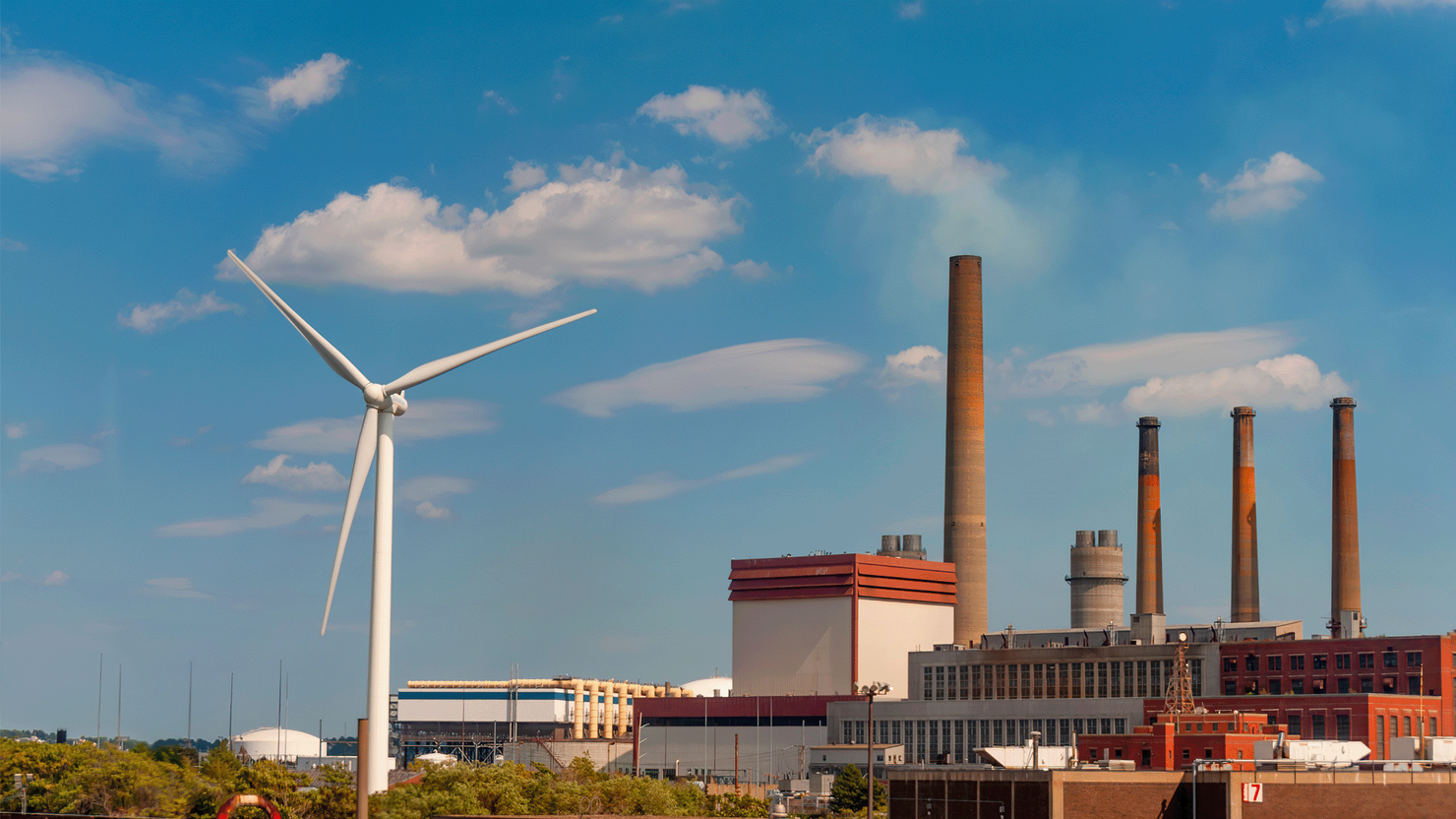Twice a month, we’re compiling the most relevant news stories from diverse sources online, connecting the latest environmental and energy economics research to global current events, real-time public discourse, and policy decisions. Keep reading, and feel free to send us your feedback.
Here are some questions we’re asking and addressing with our research chops this week:
The Biden administration has announced which groups will receive funding to create regional “hubs” that will produce and distribute hydrogen fuel. What do we know about the selected hubs, and what comes next?
Last week, the Biden administration announced the seven applicants that will proceed to the next step of the multibillion-dollar Regional Clean Hydrogen Hubs program. Hydrogen hubs are regional networks of hydrogen producers and consumers. The selected hubs, which span 16 states, will test the viability of hydrogen as a low-carbon alternative to fossil fuels in various economic sectors. While the selection of these hubs warrants excitement, many challenges that are associated with hydrogen fuel remain. In a new blog post, Resources for the Future (RFF) scholars Alan Krupnick, Aaron Bergman, Lucie Bioret, Yuqi Zhu, and Katarina Nehrkorn examine the selected hydrogen hubs, the plans for producing and using hydrogen, and the road ahead for the hydrogen hub program. “The selection of these hydrogen hub winners is an important milestone along the path to net zero,” they say. “We hope that this large government investment can catalyze new technologies and network effects to enable decarbonization across the US economy.”
How big are the economic benefits of meeting the temperature targets in the Paris Agreement?
September 2023 was the hottest September and the most unusually warm month since the National Oceanic and Atmospheric Administration began measuring temperatures. This September also marked the fourth consecutive month with record-breaking global temperatures. 2023 almost certainly will be the warmest year on record. While several factors may be contributing to this year’s striking heat, the underlying persistence of human-caused global warming continues. Limiting this warming to the temperature targets in the Paris Agreement could have enormous benefits, say RFF scholars Jordan Wingenroth, Brian C. Prest, and Kevin Rennert. In a new article on the Common Resources blog, they project the benefits of limiting global warming to the Paris Agreement goals of 1.5°C and “well below” 2°C relative to pre-industrial levels. “Limiting temperature increases to the Paris Agreement goal of well below 2°C is expected to prevent about half of climate damages,” they say.
How can policymakers and developers of renewable energy projects generate durable support for a transition to clean energy?
A recent agreement between developers of solar energy projects and tribal, environmental, and farming groups may facilitate the construction of more large solar farms in the United States. The agreement provides stakeholders a framework for public engagement early in the process of solar project development. Solar energy likely will be instrumental in making progress toward the Biden administration’s goal of achieving a clean electricity grid by 2035; however, some local groups oppose solar projects in their communities. In a recent episode of the Resources Radio podcast, Alexander Gazmararian and Dustin Tingley discuss how public engagement may relax some of that opposition and help build durable community support for clean energy. Gazmararian is a doctoral candidate at Princeton University, and Tingley is a professor at Harvard University. “We need a bottom-up approach, a ground-up approach, where you take the insights from people who are going to be living through the energy transition,” says Gazmararian.

Evergreen Time Machine
RFF research from our archives offers historical background and possible solutions for the challenges in today’s news.
This [climate-disclosure] rule clearly is necessary, as climate-related risks have become, in many cases, a material risk to a lender or equity holder.
Last week: California enacted two landmark climate-disclosure laws. One of the laws will require corporate entities that operate in California and annually earn over $1 billion to publicly report emissions, and the second will require companies that are worth over $500 million to report the financial risks that climate change may pose for these companies and the companies’ plans for mitigating these risks. These California laws are even more comprehensive than the climate-disclosure rule that the US Securities and Exchange Commission has proposed. A special series of articles on the Common Resources blog, published in 2022 as the commission began considering the federal climate-disclosure rule, covered various aspects and implications involved in the implementation of such a rule. Read more about indirect emissions disclosures, corporate climate pledges and carbon offsets, and potential legal challenges by exploring the blog posts in this series.

Expert Perspectives
In Focus: Carbon Dioxide Removal from US Forests
Forests, which remove carbon dioxide from the atmosphere by sequestering carbon in growing vegetation and soils, are key players in the US strategy for carbon dioxide removal and achieving net-zero emissions by midcentury. Will forests be enough? David N. Wear, director of RFF’s Land Use, Forestry, and Agriculture Program and coauthor of a new working paper about carbon storage in US forests, shares his thoughts on how forests and new technologies both can help meet the nation’s climate goals.

Resources Roundup

Accelerating Decarbonization in the United States
Many sectors of the US economy rely on fossil fuels, which complicates the transition to clean energy. A new report from the National Academies of Sciences, Engineering, and Medicine offers sector-by-sector recommendations for achieving this energy transition equitably. The report includes contributions from Susan F. Tierney, chair of the RFF Board of Directors; Billy Pizer, RFF’s Vice President for Research and Policy Engagement; and RFF University Fellows Julia Haggerty and Carlos Martín. “Part of the challenge is making sure … there’s no community that is held back in being able to acquire some of these best practices and … innovations,” said Martín in a recent webinar that was held on Tuesday alongside the release of the report.
Flooding in the United States
Climate change and population growth in flood-prone areas have increased both the frequency and cost of flooding damages in the United States. In a new entry in RFF’s explainer series, RFF Senior Fellow Margaret A. Walls, former Senior Research Analyst Sophie Pesek, and Senior Digital Media and Marketing Associate Donnie Peterson examine the causes, types, and impacts of flooding in the United States. “Rising precipitation, sea level, and storm intensity all contribute to increased vulnerability in high-flood-risk communities,” they say.
Examining Plans in Missouri to Transition Away from Coal-Powered Electricity
While the United States has a goal of achieving net-zero emissions in the power sector by 2035, some states are less prepared than others to navigate the transition to clean electricity. Missouri has no formal climate goals, and the state’s power sector primarily relies on coal-fired power plants. In a recent issue brief, RFF Research Associate Maya Domeshek examines how Missouri could retire or retrofit a share of these coal-fired plants and the challenges associated with retiring these plants. “Many coal plants cost more to operate than the expense of building and operating a new renewable resource, but remaining debt on the coal facilities deters utilities from retiring them,” says Domeshek. This issue brief is the first in a series on how state electricity plans stack up against the national goal of a net-zero power sector. Stay tuned for future entries in the series.
Designing Carbon Border Adjustment Policies
Carbon border adjustments impose a fee on imported products based on the amount of greenhouse gas emissions that were emitted during the production of these goods; such fees aim to allow countries to both remain economically competitive and work toward emissions-reduction goals. These policies have gained increased attention since the European Union implemented a carbon border adjustment earlier this month. In a new report, RFF scholars Raymond J. Kopp, Billy Pizer, and Kevin Rennert discuss key elements of carbon border adjustment policies that policymakers in the United States, European Union, and elsewhere could incorporate in future legislation. “One can expect to see a good deal of variation as other nations roll out their versions [of carbon border adjustment policies],” they say.
A Look Inside the US Wildfire Workforce
The Wildland Fire Mitigation and Management Commission recently released a report with recommendations for addressing the challenges that are associated with wildfire in the United States. In the latest episode of the Resources Radio podcast, Emily Browne comments on some of these recommendations, her experience working as a firefighter in an all-female fire program with the US National Park Service, and her perspective on mental health and the gender disparity in the firefighting workforce. “As of 2020, only 12 percent of federal wildland firefighters are women,” says Browne, “but it was empowering to be part of a program that’s how we’re changing that.”

#ChartOfTheWeek

Chart: US Office of Clean Energy Demonstrations
The Biden administration has selected seven winners in the competition to work with the US Department of Energy on the creation of regional hydrogen hubs, which are networks of hydrogen producers and consumers. The map above shows the planned locations of these hubs. While all of the hubs will produce low-carbon (so-called “clean”) hydrogen, the planned methods of producing hydrogen differ among the hubs. Several hubs will produce hydrogen with a combination of natural gas and carbon capture and storage, other hubs will use renewable or nuclear energy to produce hydrogen from water through a process called electrolysis, and one hub will create hydrogen from biomass. The selected hubs will focus on different end uses for hydrogen, including low-carbon steelmaking, fertilizer production, and other applications.









